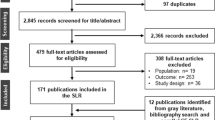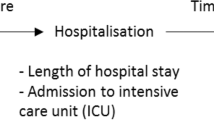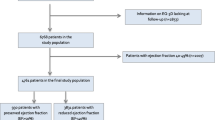Abstract
Background and Objective
Utility provides a preference for specific health state in economic evaluation, and they obtained from general population could be useful in respect of societal resource allocation. We aimed to investigate the utilities of health states for heart failure (HF), a major and growing public health problem, related to hospitalization and adverse drug effects by interrogating the general Korean population.
Methods
Five health states for patients with HF were developed based on literature reviews: stable chronic heart failure (SCHF), hospitalization, SCHF + cough, SCHF + hypotension, and SCHF + hyperkalemia. We selected 100 individuals from the general population through quota sampling by age, sex, and region, and conducted face-to-face interviews. We measured utilities for 5 hypothetical health states of HF using both time trade-off (TTO) and EuroQol-5 dimensions-5 levels (EQ-5D-5L). Repeated-measures analysis of variance compared the utilities between all health states for each instrument. To identify the factors affecting the utility, a linear mixed model (LMM) analysis was performed.
Results
The mean utility value for SCHF, SCHF + cough, SCHF + hypotension, SCHF + hyperkalemia, and hospitalization was calculated as 0.815, 0.732, 0.646, 0.548, and 0.360, respectively, by using TTO. The respective values using EQ-5D-5L were 0.871, 0.793, 0.710, 0.589, and 0.215. The utilities for HF significantly differed between all health states in each instrument (p < 0.001). In LMM analysis, hospitalization had a significantly negative effect on the utilities of both instruments.
Conclusions
The utilities decreased in order of SCHF, SCHF + cough, SCHF + hypotension, SCHF + hyperkalemia, and hospitalization. These results can be useful for decision making in resource allocation for HF interventions.

Similar content being viewed by others
References
Lee JH, Lim NK, Cho MC, Park HY. Epidemiology of heart failure in Korea: present and future. Korean Circ J. 2016;46(5):658–64.
Roger VL. Epidemiology of heart failure. Circ Res. 2013;113(6):646–59.
Bennett SJ, Cordes DK, Westmoreland G, Castro R, Donnelly E. Self-care strategies for symptom management in patients with chronic heart failure. Nurs Res. 2000;49(3):139–45.
Morgan K, McGee H, Shelley E. Quality of life assessment in heart failure interventions: a 10-year (1996–2005) review. Eur J Cardiovasc Prev Rehabil. 2007;14(5):589–607.
Zambroski CH, Moser DK, Bhat G, Ziegler C. Impact of symptom prevalence and symptom burden on quality of life in patients with heart failure. Eur J Cardiovasc Nurs. 2005;4(3):198–206.
McMurray JJ, Adamopoulos S, Anker SD, Auricchio A, Bohm M, Dickstein K, et al. ESC guidelines for the diagnosis and treatment of acute and chronic heart failure 2012: The Task Force for the Diagnosis and Treatment of Acute and Chronic Heart Failure 2012 of the European Society of Cardiology. Developed in collaboration with the Heart Failure Association (HFA) of the ESC. Eur J Heart Fail. 2012;14(8):803–69.
McMurray JJ, Packer M, Desai AS, Gong J, Lefkowitz MP, Rizkala AR, et al. Angiotensin-neprilysin inhibition versus enalapril in heart failure. N Engl J Med. 2014;371(11):993–1004.
Brignall K, Jayaraman B, Birring SS. Quality of life and psychosocial aspects of cough. Lung. 2008;186(Suppl 1):S55–8.
Thompson A. Hypotension: issues and management. PJ Online. 2011;1–4.
Weller K, Groffik A, Magerl M, Tohme N, Martus P, Krause K, et al. Development and construct validation of the angioedema quality of life questionnaire. Allergy. 2012;67(10):1289–98.
Testa MA, Simonson DC. Assesment of quality-of-life outcomes. N Engl J Med. 1996;334(13):835–40.
Torrance GW. Utility approach to measuring health-related quality of life. J Chronic Dis. 1987;40(6):593–603.
Drummond MF, O’Brien B, Stodart G, Torrance GW. Methods for the economic evaluation of health care programmes. 3rd ed. Oxford: Oxford University Press; 2005. p. 137–88.
Whitehead SJ, Ali S. Health outcomes in economic evaluation: the QALY and utilities. Br Med Bull. 2010;96(1):5–21.
Bae S, Lee S, Bae EY, Jang S. Korean guidelines for pharmacoeconomic evaluation (second and updated version): consensus and compromise. Pharmacoeconomics. 2013;31(4):257–67.
Brazier J, Ratcliffe J, Salomon J, Tsuchiya A. Measuring and valuing health benefits for economic evaluation. 2nd ed. Oxford: Oxford University Press; 2016. p. 112–6.
Ponikowski P, Voors AA, Anker SD, Bueno H, Cleland JG, Coats AJ, et al. 2016 ESC Guidelines for the diagnosis and treatment of acute and chronic heart failure: The Task Force for the diagnosis and treatment of acute and chronic heart failure of the European Society of Cardiology (ESC). Developed with the special contribution of the Heart Failure Association (HFA) of the ESC. Eur J Heart Fail. 2016;18(8):891–975.
Sarwar CMS, Papadimitriou L, Pitt B, Piña I, Zannad F, Anker SD, et al. Hyperkalemia in heart failure. J Am Coll Cardiol. 2016;68(14):1575–89.
Parkerson GR Jr, Connis RT, Broadhead WE, Patrick DL, Taylor TR, Tse CK. Disease-specific versus generic measurement of health-related quality of life in insulin-dependent diabetic patients. Med Care. 1993;31(7):629–39.
Janssen MF, Pickard AS, Golicki D, Gudex C, Niewada M, Scalone L, et al. Measurement properties of the EQ-5D-5L compared to the EQ-5D-3L across eight patient groups: a multi-country study. Qual Life Res. 2013;22(7):1717–27.
Kim SH, Jo MW, Ahn J, Shin S, Ock M, Park J, et al. The valuation of EQ-5D-5L health states in Korea. Value Health. 2014;17(7):A753.
Attema AE, Edelaar-Peeters Y, Versteegh MM, Stolk EA. Time trade-off: one methodology, different methods. Eur J Health Econ. 2013;14(Suppl 1):S53–64.
Reenen M, Janssen B. EQ-5D-5L user guide: basic information on how to use the EQ-5D-5L instrument. EuroQoL Group. 2015. https://euroqol.org/wp-content/uploads/2016/09/EQ-5D-5L_UserGuide_2015.pdf. Accessed 2 Sept 2016.
Kim S-H, Ahn J, Ock M, Shin S, Park J, Luo N, et al. The EQ-5D-5L valuation study in Korea. Qual Life Res. 2016;25(7):1845–52.
Kiernan MS, Wentworth D, Francis G, Martinez FA, Dickstein K, Komajda M, et al. Predicting adverse events during angiotensin receptor blocker treatment in heart failure: results from the HEAAL trial. Eur J Heart Fail. 2012;14(12):1401–9.
Sztramko R, Chau V, Wong R. Adverse drug events and associated factors in heart failure therapy among the very elderly. Can Geriatr J. 2011;14(4):79–92.
Yao G, Freemantle N, Calvert MJ, Bryan S, Daubert J-C, Cleland JG. The long-term cost-effectiveness of cardiac resynchronization therapy with or without an implantable cardioverter-defibrillator. Eur Heart J. 2007;28(1):42–51.
Griffiths A, Paracha N, Davies A, Branscombe N, Cowie M. Sculpher M The cost effectiveness of ivabradine in the treatment of chronic heart failure from the UK National Health Service perspective. Heart. 2014;100:1031–6.
Ponikowski P, Voors AA, Anker SD, Bueno H, Cleland JG, Coats AJ, et al. 2016 ESC Guidelines for the diagnosis and treatment of acute and chronic heart failure. Kardiol Pol. 2016;74(10):1037–147.
Whitehead SJ, Ali S. Health outcomes in economic evaluation: the QALY and utilities. Br Med Bull. 2010;96:5–21.
Nafees B, Cowie M, Patel C, Deschaseaux C, Brazier J, Lloyd A. Health state utilities in chronic heart failure in the UK. Value Health. 2014;17(7):A493.
Drummond M, Brixner D, Gold M, Kind P, McGuire A, Nord E, Group CD. Toward a consensus on the QALY. Value Health. 2009;12(Suppl 1):S31–5.
Weinstein MC, Torrance G, McGuire A. QALYs: the basics. Value Health. 2009;12(Suppl 1):S5–9.
Eisele M, Blozik E, Stork S, Trader JM, Herrmann-Lingen C, Scherer M. Recognition of depression and anxiety and their association with quality of life, hospitalization and mortality in primary care patients with heart failure - study protocol of a longitudinal observation study. BMC Fam Pract. 2013;14:180.
Konstam V, Moser DK, De Jong MJ. Depression and anxiety in heart failure. J Card Fail. 2005;11(6):455–63.
Polikandrioti M, Goudevenos J, Michalis LK, Koutelekos J, Kyristi H, Tzialas D, et al. Factors associated with depression and anxiety of hospitalized patients with heart failure. Hell J Cardiol. 2015;56(1):26–35.
Nafees B, Stafford M, Gavriel S, Bhalla S, Watkins J. Health state utilities for non-small cell lung cancer. Health Qual Life Outcomes. 2008;6:84.
Lloyd A, Nafees B, Narewska J, Dewilde S, Watkins J. Health state utilities for metastatic breast cancer. Br J Cancer. 2006;95(6):683–90.
Luo N, Teng TK, Tay WT, Anand IS, Kraus WE, Liew HB, et al. Multinational and multiethnic variations in health-related quality of life in patients with chronic heart failure. Am Heart J. 2017;191:75–81.
Author information
Authors and Affiliations
Corresponding author
Ethics declarations
Funding
This study was funded by Novartis Korea Ltd. The sponsor did not engage in study design; in the collection, analysis and interpretation of data; in the writing of the manuscript; and in the decision to submit the article for publication.
Conflict of interest
Sung-Hyun Hong, Jae-Yeon Lee, Sun-Kyeong Park, Jin Hyun Nam, Hyun Jin Song, Sun-Young Park, and Eui-Kyung Lee declare that they have no conflict of interest.
Ethical approval
This study was approved by the Institutional Review Board of Sungkyunkwan University (approval number: 2015-12-004-001). All procedures performed in studies involving human participants were in accordance with the ethical standards of the institutional and/or national research committee and with the 1964 Helsinki declaration and its later amendments or comparable ethical standards.
Informed consent
Informed consent was obtained from all individual participants included in the study.
Rights and permissions
About this article
Cite this article
Hong, SH., Lee, JY., Park, SK. et al. The Utility of 5 Hypothetical Health States in Heart Failure Using Time Trade-Off (TTO) and EQ-5D-5L in Korea. Clin Drug Investig 38, 727–736 (2018). https://doi.org/10.1007/s40261-018-0659-8
Published:
Issue Date:
DOI: https://doi.org/10.1007/s40261-018-0659-8




